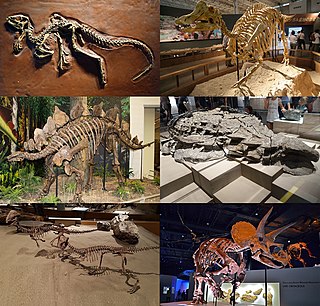
Ornithischia is an extinct clade of mainly herbivorous dinosaurs characterized by a pelvic structure superficially similar to that of birds. The name Ornithischia, or "bird-hipped", reflects this similarity and is derived from the Greek stem ornith- (ὀρνιθ-), meaning "bird", and ischion (ἴσχιον), meaning "hip". However, birds are only distantly related to this group as birds are theropod dinosaurs. Ornithischians with well known anatomical adaptations include the ceratopsians or "horn-faced" dinosaurs, the pachycephalosaurs or "thick-headed" dinosaurs, the armored dinosaurs (Thyreophora) such as stegosaurs and ankylosaurs, and the ornithopods. There is strong evidence that certain groups of ornithischians lived in herds, often segregated by age group, with juveniles forming their own flocks separate from adults. Some were at least partially covered in filamentous pelts, and there is much debate over whether these filaments found in specimens of Tianyulong, Psittacosaurus, and Kulindadromeus may have been primitive feathers.

Qantassaurus is a genus of basal two-legged, plant-eating elasmarian ornithischian dinosaur that lived in Australia about 125-112 million years ago, when the continent was still partly south of the Antarctic Circle. It was described by Patricia Vickers-Rich and her husband Tom Rich in 1999 after a find near Inverloch, and named after Qantas, the Australian airline.

Ceratopsia or Ceratopia is a group of herbivorous, beaked dinosaurs that thrived in what are now North America, Europe, and Asia, during the Cretaceous Period, although ancestral forms lived earlier, in the Jurassic. The earliest known ceratopsian, Yinlong downsi, lived between 161.2 and 155.7 million years ago. The last ceratopsian species, Triceratops prorsus, became extinct during the Cretaceous–Paleogene extinction event, 66 million years ago.
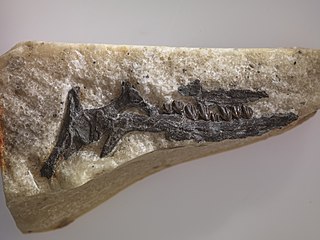
Leaellynasaura is a genus of small herbivorous ornithischian dinosaurs from the late Aptian to early Albian stage of the Early Cretaceous, around 118-110 million years ago. It was first discovered in Dinosaur Cove, Australia. The only known species is Leaellynasaura amicagraphica. It was described in 1989, and named after Leaellyn Rich, the daughter of the Australian palaeontologist couple Tom Rich and Patricia Vickers-Rich who discovered it. The specific name, amicagraphica, translates to "friend writing" and honours both the Friends of the Museum of Victoria and the National Geographic Society for their support of Australian paleontology.

Atlascopcosaurus is a genus of herbivorous basal iguanodont dinosaur from the Early Cretaceous Eumeralla Formation of Australia.

Minmi is a genus of small herbivorous ankylosaurian dinosaur that lived during the early Cretaceous Period of Australia, about 120 to 112 million years ago.

Micropachycephalosaurus is an extinct genus of basal marginocephalian dinosaur containing only the type species, Micropachycephalosaurus hongtuyanensis. It lived in China during the Late Cretaceous (Campanian) and was found in the Jiangjunding Formation.
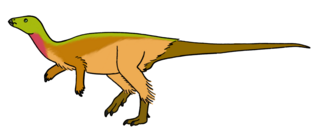
Notohypsilophodon is a genus of ornithopod dinosaur from the Late Cretaceous of Argentina. It was described as the only "hypsilophodont" known from South America, although this assessment is not universally supported, and Gasparinisaura is now believed to have been a basal euornithopod as well.

Fulgurotherium is a dubious genus of ornithischian dinosaur from the Late Cretaceous (Cenomanian) Griman Creek Formation. It lived in what is now Australia.
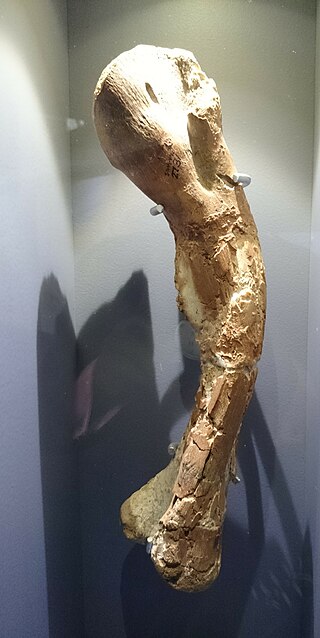
Kangnasaurus is a genus of iguanodontian ornithopod dinosaur found in supposedly Early Cretaceous rocks of South Africa. It is known from a tooth and possibly some postcranial remains found in the early-Aptian Kalahari Deposits Formation. It was probably similar to Dryosaurus.

Notoceratops is a dubious genus of extinct ornithischian dinosaur based on an incomplete, toothless left dentary from the Late Cretaceous of Patagonia, probably dating to the Campanian or Maastrichtian. It was most likely a ceratopsian and it was found in the Lago Colhué Huapi Formation.

Leptoceratopsidae is an extinct family of neoceratopsian dinosaurs from Asia, North America and Europe. Leptoceratopsids resembled, and were closely related to, other neoceratopsians, such as the families Protoceratopsidae and Ceratopsidae, but they were more primitive and generally smaller.

Trinisaura is a genus of ornithopod dinosaur that lived during the late Campanian stage of the Upper Cretaceous, around 73 to 72 million years ago in what is now James Ross Island off the coast of northern Antarctica near Patagonia. It is known from a single, incomplete postcranial skeleton that includes several vertebrae, a partial pelvis, and nearly complete right hindlimb. The fossils were collected in 2008 by paleontologists Juan Moly and Rodolfo Coria from the sandstone of the Snow Hill Island Formation. It remained undescribed in the collections of the Museo de La Plata until its description by Coria and colleagues in 2013, being the basis of the novel genus and species Trinisaura santamartaensis. The genus name is to commemorate the efforts of Argentine geologist Trinidad "Trini" Diaz and the Latin root -sauros, meaning "lizard". The species name is after Santa Marta Cove, where the fossils were collected.

Morrosaurus is an extinct genus of herbivorous elasmarian dinosaur that lived in the late Cretaceous in Antarctica. The only known species is the type Morrosaurus antarcticus.

Diluvicursor is a genus of small ornithischian from the Lower Albian of Australia. It is known from one species, the type species D. pickeringi. The two known specimens, a vertebra and a partial juvenile postcranium discovered in 2005 from the Eumeralla Formation, are known, and they were named in early 2018.

Galleonosaurus is a genus of basal ornithopod dinosaur from the Wonthaggi Formation of the Gippsland region of Victoria, Australia. The type and only species is Galleonosaurus dorisae.

Parankylosauria is a group of basal ankylosaurian dinosaurs known from the Cretaceous of South America, Antarctica, and Australia. It is thought the group split from other ankylosaurs during the mid-Jurassic period, despite this being unpreserved in the fossil record.

Maip is a genus of large megaraptorid theropod dinosaur from the Late Cretaceous (Maastrichtian) Chorrillo Formation of Santa Cruz, Argentina. The genus contains a single species, M. macrothorax, known from an incomplete, disarticulated skeleton. Maip may represent the largest megaraptorid known from South America, and possibly the world.
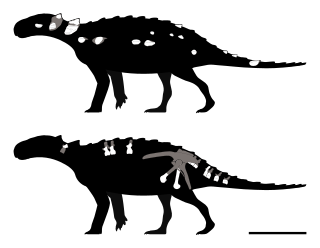
Patagopelta is an extinct genus of ankylosaurian dinosaur from the Late Cretaceous Allen Formation of Argentina. The genus contains a single species, P. cristata, known from a partial skeleton. While originally described as a nodosaurine, later discoveries provided support for parankylosaurian affinities for the taxon. Patagopelta is a very small ankylosaur, comparable in size to the dwarf nodosaurid Struthiosaurus, about 2 m (6.6 ft) long.

Diuqin is an extinct genus of unenlagiine theropod dinosaurs from the Late Cretaceous (Santonian) Bajo de la Carpa Formation of Argentina. The genus contains a single species, Diuqin lechiguanae, known from a humerus and fragmentary vertebrae.




















